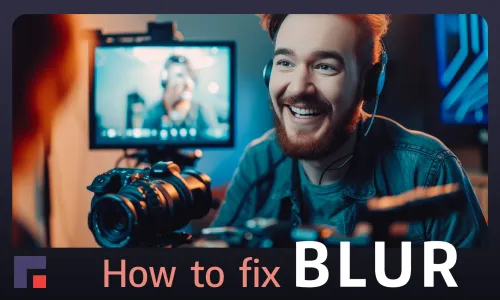In the ever-evolving landscape of video content creation, the quest for pristine and professional-looking footage is a perpetual challenge. AI stabilization filters revolutionize the way we experience and produce videos. Let's find out the advantages and possibilities of this filter.
Adjustable Strength for Optimal Results
One of the standout features of these AI stabilization filters is their adaptability. Users now can customize the strength of the stabilization, tailoring it to the specific needs of their footage. For instances of highly shaky videos, opting for higher strength ensures a more robust stabilization process, effectively correcting pronounced shakes and jitters. Conversely, for less shaky videos, a lower strength setting maintains a natural flow while subtly enhancing stability.
When to Use AI Stabilization Filters:
Shaky Footage: The primary purpose of AI stabilization filters is to correct shaky or unstable footage. If your video exhibits noticeable shakes, jitters, or vibrations, applying the stabilization filter can significantly improve its overall quality.
Handheld Shooting: Videos recorded without the use of a tripod or stabilization equipment are more prone to unwanted motion. AI stabilization filters are particularly effective in compensating for the inherent instability associated with handheld shooting.
Dynamic Action Shots: Fast-moving or dynamic scenes may result in motion blur and instability. AI stabilization filters help smooth out these motions, providing a more visually appealing and professional-looking end result.
Amateur Filmmaking: For amateur filmmakers or content creators with limited equipment, AI stabilization can be a valuable tool. It allows for the creation of smoother, more polished videos without the need for expensive stabilization gear.
Mobile Videography: Videos captured on smartphones, especially in handheld mode, often suffer from shakes and jitters. AI stabilization is beneficial in enhancing the quality of mobile videography.

When Not to Apply AI Stabilization Filters:
Intentional Motion Effects: If you intentionally incorporate motion effects or camera shakes for creative purposes, applying stabilization filters may counteract the intended artistic expression. In such cases, it's best to avoid stabilization.
Already Stable Footage: If your video is already relatively stable and lacks noticeable shakes or jitters, applying AI stabilization may introduce unnecessary processing and potentially alter the natural flow of the footage. In such instances, it's better to keep the original stability.
Fixed-Angle Shots: Videos shot from a fixed angle or on a stable platform, such as a tripod, may not require AI stabilization. In these scenarios, stabilization filters may not add significant value and can be omitted.
Certain Artistic Styles: Some video styles, such as documentary or cinema verité, deliberately embrace the raw and unsteady aesthetic. Applying AI stabilization in these cases may conflict with the desired artistic effect.
Happy video enhancement!


